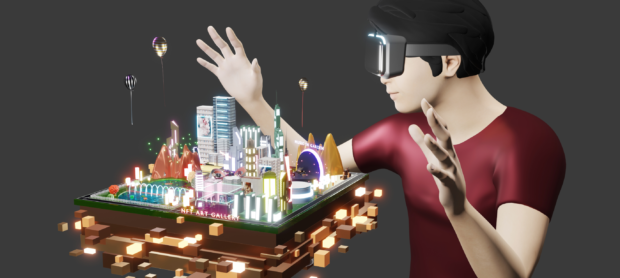The demand for top-notch Android applications is rising as the world grows more and more mobile-centric. Yet, creating Android applications can be a difficult and time-consuming process, requiring developers to juggle several libraries, frameworks, and APIs in order to produce a high-quality user experience. Android Jetpack Compose fills that gap.
Using a declarative programming paradigm, Android Jetpack Compose is a cutting-edge tool set for creating Android user interfaces. Developers can write less code, easily design stunning UIs, and iterate faster than ever before using Jetpack Compose. Since its debut in 2019, Jetpack Compose has grown to be a crucial tool for Android developers.
Many major difficulties describe the situation of Android app development as it is now. First and foremost, there are a variety of devices and screen sizes to take into consideration, each with its own set of specifications. Also, new features and APIs are always being introduced to the Android platform, which is constantly changing. This might make it challenging for developers to stay on top of things and make sure that their apps are constantly current.
Additionally, imperative programming approaches, which can be challenging to scale and maintain, have been frequently utilized in conventional Android UI development. To construct simple UI elements, developers frequently need to write a lot of boilerplate code, which can slow down development and make it more difficult to iterate rapidly. By offering a declarative programming approach that makes it simpler and quicker to design attractive UIs, Jetpack Compose responds to these issues.
What is Android Jetpack Compose?
Android Jetpack Compose is a modern toolkit for building Android UIs using a declarative programming model. Developers can write less code, easily design stunning UIs, and iterate faster than ever before using Jetpack Compose. Kotlin, a cutting-edge programming language intended to be succinct, expressive, and secure, is the foundation around which Jetpack Compose is built.
The declarative programming model of Jetpack Compose is one of its primary characteristics. Instead of defining a sequence of mandatory processes to build each UI piece, Jetpack Compose allows developers to describe what their UI should look and behave like. Because developers don’t have to write as much boilerplate code, sophisticated UIs can be created more quickly and easily.
Support for animations is another essential component of Jetpack Compose. The user experience can be improved by creating fluid, responsive animations with Jetpack Compose. Developers may produce animations with Jetpack Compose by using a declarative syntax that is simple to read and comprehend.


A collection of integrated Material Design components is also included in Jetpack Compose, making it simple to design apps that match other Android apps in terms of appearance and feel. Among these elements are buttons, text fields, cards, and others.
Furthermore, compared to conventional Android UI development, Jetpack Compose delivers higher performance. Jetpack Compose can more effectively update UI elements as needed because it employs a declarative programming paradigm. As a result, apps created with Jetpack Compose are frequently quicker and more responsive than apps created using standard Android UI development techniques.
Ultimately, the way Android developers approach UI creation has changed significantly as a result of Jetpack Compose. Jetpack Compose facilitates the creation of stunning, responsive Android apps by offering a declarative programming model, integrated animations and Material Design elements, and enhanced performance.
How does Jetpack Compose simplify and speed up app development?
By offering a declarative programming model that minimizes the amount of boilerplate code that developers must write, Jetpack Compose makes common development jobs easier. For instance, typical Android UI development may necessitate the use of numerous nested XML tags, which can be time-consuming and challenging to maintain. Developers may construct layouts using Jetpack Compose utilizing a syntax that is clearer, more user-friendly, and simpler to read and understand.
Traditional Android UI development can also be challenging and error-prone when handling state. State management is significantly easier and more effective with Jetpack Compose. A robust state management mechanism included in Jetpack Compose makes it simple to track changes to UI elements and react to user interaction. As a result, developers can focus more on creating wonderful user experiences and less time on issue fixing.
The process of putting animations into use is also made simpler using Jetpack Compose. Due to the fact that they can involve a lot of boilerplate code, animations can be difficult to design and manage in traditional Android UI development. Animations are significantly simpler to use with Jetpack Compose. A built-in animation system is included in Jetpack Compose, enabling programmers to produce fluid, responsive animations using a straightforward declarative syntax.

Jetpack Compose makes it easier for developers to write code more quickly and effectively by streamlining some typical development chores. Developers can concentrate on producing fantastic user experiences by spending less time on boilerplate code. Also, because of the enhanced responsiveness and performance of apps created with Jetpack Compose, developers can be sure that their products will offer a wonderful user experience across a variety of Android devices. Overall, Jetpack Compose marks a significant advancement in Android app development by making the process of creating attractive, responsive, and engaging apps quicker and easier.
Jetpack Compose integrations with other Jetpack libraries
When combined with other Jetpack modules, Jetpack Compose forms a potent toolkit for developers to use when creating top-notch Android apps. In addition to Jetpack Compose, the following Jetpack libraries may be used:
- LiveData: A reactive programming technique for changing UI components in response to data changes is provided by the LiveData Jetpack package. Developers can easily construct fluid, reactive user interfaces by managing data flow throughout their projects with LiveData using Jetpack Compose.
- ViewModel: This is a Jetpack library that offers a mechanism to lifecycle-awarely store and manage UI-related data. Developers can manage state in their projects using ViewModel with Jetpack Compose, making it simpler to handle configuration updates and other lifecycle events.
- Navigation: This is a Jetpack library that provides a framework for navigating between screens within an app. With Jetpack Compose, developers can use Navigation to create intuitive, gesture-based navigation within their apps, making it easy for users to find the information they need.
Via the provision of a unified, standardized set of tools for creating Android apps, these integrations can further streamline development. For instance, developers can simply control data flow and state inside their apps by combining LiveData and ViewModel with Jetpack Compose, which lowers the likelihood of defects and other problems.
In actuality, these integrations function by giving programmers a collection of tools and APIs that can be used to produce strong, responsive programs. For example, Jetpack Compose offers a robust UI toolkit for creating dynamic, reactive user interfaces, while Navigation offers a collection of APIs for specifying app navigation. Developers may design apps that are simpler to build, maintain, and upgrade over time by combining these tools.
Overall, the integrations of Jetpack Compose with other Jetpack modules provide a strong set of tools for creating excellent Android apps. These integrations make it simpler for developers to construct fluid, reactive user interfaces that deliver an excellent user experience across a variety of Android devices by offering a standard set of APIs and tools.
Real-world examples of Jetpack Compose in action
For creating responsive, reactive user interfaces in Android applications, Jetpack Compose is a potent toolbox. Real-world applications created using Jetpack Compose include the following:
- Plaid: A financial app created by Google, Plaid demonstrates some of the most recent design and development methodologies for Android applications. To create a fantastic user experience, Plaid was designed with Jetpack Compose and heavily utilizes animations and other UI elements.
- Using Jetpack Compose, Tivi was created as an open-source TV program tracking application. The software features a clear, simple user experience that is simple to use and makes it simple for users to keep track of their favorite TV series.
- CryptoPunks: Developed using Jetpack Compose, CryptoPunks is a well-known NFT collectibles app. The software offers a fluid user experience for purchasing, selling, and trading NFTs and heavily utilizes animations and other UI features to provide a responsive, fluid user interface.


The ability of Jetpack Compose to create responsive, reactive user interfaces that provide a fantastic user experience is shown by these applications. By utilizing Compose, developers can manage states, apply animations, and generate layouts more quickly and simply, freeing them up to concentrate on designing fantastic user experiences rather than fretting about the underlying technology.
Due to its robust declarative programming style, Jetpack Compose in particular makes it simple to design sophisticated UI components and animations. Without having to worry about the underlying implementation specifics, this enables developers to specify UI components and animations in a straightforward, understandable manner.
Overall, these real-world examples show the strength and capability of Jetpack Compose for creating excellent Android applications. Jetpack Compose makes it simpler and faster than ever to construct responsive, reactive user interfaces that provide an excellent user experience on a variety of Android devices.
Conclusion
In conclusion, Android Jetpack Compose and its integrations offer a powerful and efficient way to simplify and speed up the app development process. By providing a declarative approach to UI development, Compose allows developers to create responsively, reactive user interfaces that provide a great user experience on a wide range of Android devices.
At Eventyr, we recognize the value of producing outstanding user experiences, and our highly skilled team is committed to making your ideas a reality. We can assist you if you want to create an Android app that offers a flawless user experience. For more information on how we may assist you in creating your next app using Jetpack Compose, contact us. Together, let’s build an app that exceeds your needs and delights your users.




